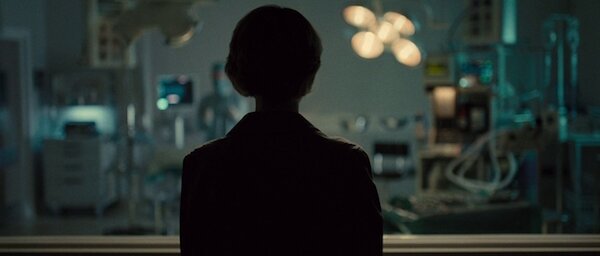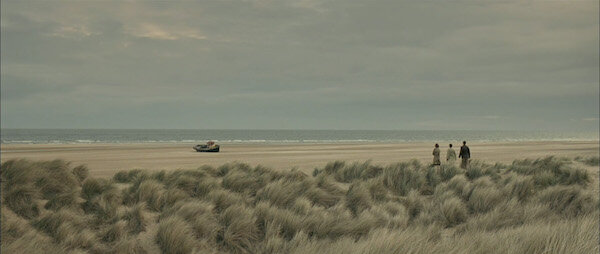Tenderness and nostalgia are rarely welcome in dystopian worlds, but an alternative vision was offered in 2010’s Never Let Me Go, to then be further crystallised 10 years later with Phoebe Bridgers’ second album ‘Punisher’. On the marriage between horror and softness, Katie Kirkpatrick writes on the new wave of dystopia which feels more compelling, and current, than ever.
“Let the dystopian morning light pour in”, sings Grammy-nominated artist Phoebe Bridgers in her song ‘ICU’. These lyrics conjure up the softness of dawn light, sun streaming through net curtains, quiet birdsong – but also a sense of the unknown, the unsettling. The 2010 film Never Let Me Go, based on the novel of the same name by Kazuo Ishiguro, leaves a similar aftertaste. Unlike the flashy futures of YA classics like The Hunger Games and Divergent, Never Let Me Go explores the horror of dystopia from a perspective of tenderness and nostalgia, and in doing so earns a place as perhaps the most chilling of all.
Never Let Me Go opens with a shot of Tommy, (Andrew Garfield) an initially anonymous man in his late-twenties on an operating table, as Kathy (Carey Mulligan), a woman of the same age, smiles sadly at him from behind glass. Much of the first act then takes place at a boarding school called Hailsham, somewhere in the English countryside. This appears at first to be a straightforward coming-of-age narrative: Kathy, Tommy, and their friend Ruth (Keira Knightley) go through love triangles, temper tantrums, and petty fights. However, it gradually becomes clear that there is something more sinister at play. We discover, not through a melodramatic reveal but through simple dialogue, that these young people are actually clones, born to donate their organs to keep others healthy. From there, the film melts delicately into the tragedy implied at the start.
This is an alternative, minimalist kind of dystopia. Like its more mainstream counterparts, the film questions the ethics of science and depicts a universe where people are separated into classes – but there are no dramatic fight scenes, sparkling gadgets or red-tinted skies. Instead, the horror of Never Let Me Go comes from the sense of grief and dread that winds its way through the entire narrative. As the relevance of the opening scene becomes clear, the audience shares the characters’ desperate hope for reprieve, and their knowing devastation when they find out no such thing will be possible. As Mark Fisher puts it in his article about precarious dystopias, the film’s horror ‘resides in the unrelieved quality of its fatalism’: it is a film defined by the inevitability of death.
But it doesn’t look like it. While the plot may be full of tragedy, Never Let Me Go is shot through a lens of loving nostalgia, capturing the quaintness of the British countryside and the rosy innocence of childhood. The colour palette is pastel and muted, and the soundtrack waltzes with the quiet elegance of the piano and harp. Much of the film also depicts the mundanity of life, as we see Kathy, Tommy and Ruth playing outside, watching TV, and going on day trips to the beach. We are watching Kathy’s memories, and to her they are not just tragic: her life is a series of experiences like anyone else’s, not a story about the ethics of cloning or a dystopian horror movie. The film is aware of this: its close-ups and delicate cinematography focus on the humanity of the characters, making the answer to the film’s supposed question of whether or not the clones have souls feel achingly obvious.
A similar feeling of mundane dystopia lies at the heart of Bridgers’ latest album Punisher. In the apocalyptic ballad ‘I Know the End’ she sings about “driving off into the sun” as the end of the world draws near, but also plans to “romanticize a quiet life”. The juxtaposition of intimacy, mundanity, and immense questions about life and death brings an unexpected sense of honesty to Bridgers’ music, while also presenting a dystopia for our generation, for whom it no longer feels like something far off in the distant future – it’s just beyond our fingertips.
Both ‘Punisher’ and Never Let Me Go see dystopia as something so close we can touch it, blurring the lines between the unthinkable and the everyday. I see myself in Kathy’s childhood: like her, I went to school in blue gingham dresses, wore my hair pulled back with a fringe, and grew up in rural England. Never Let Me Go offers up a mirror image of normal adolescence, where everything is the same and yet slightly tainted by our knowledge of what is to come. It is also set in an alternate 20th century rather than in the future, and thus sits uncomfortably close to the realm of what’s possible. Bridgers creates a similar effect in ‘I Know the End', describing “A slaughterhouse, an outlet mall / Slot machines, fear of God” – a recognisable slideshow of suburban America met with a sudden anxiety.
Let’s return to “Let the dystopian morning light pour in.” It is Bridgers’ only lyric across her discography that explicitly references dystopia. Much of dystopian cinema uses a mix of glaring brightness and murky darkness to further illustrate its statements about class contrasts. Never Let Me Go, on the other hand, maintains a calm daylight throughout. In addition to this, a golden light is used in particular at three key moments in the film. The first of these is at the start of third act, when Kathy and Ruth reunite as adults. The childhood friends walk along the corridor of a ‘recovery centre’, with Kathy guiding a clearly weak Ruth, and are illuminated by a yellow glow. When Tommy has a final screaming breakdown, he is lit up by car headlights, and then at the very end of the film, Kathy is illuminated in a similar way as she looks into the sunset and imagines seeing Tommy on the horizon. This “dystopian morning light”, then, appears at each character’s emotional breaking point: the film uses the delicacy of light to mark moments of tragedy, once again portraying horror through softness.
The softness of both Never Let Me Go and Punisher also centres around a feeling of nostalgia. In the album’s lead single ‘Kyoto’, Bridgers sings about her relationship with her father growing up, including details like “Remember getting the truck fixed / When you let us drive it”. This use of specific anecdotes, which recurs throughout the album, gives heavier themes an unmistakable familiarity. Similarly, the first two acts of Never Let Me Go are in many ways like any other coming-of-age narrative. Kathy looks back upon Hailsham with fondness, thinking of it not as a chilling prologue to her destiny of “donation”, but with the sentimentality of a childhood home. In the same way as Bridgers quotes her family and friends, (“When you said I will never be your vegetable / Because I think when you're gone, it's forever”), Never Let Me Go intersperses plot points with conversations between Kathy, Ruth, and Tommy which aren’t momentous, instead reflecting the incidental chats that make up so much of our daily interactions. In one scene, Kathy and Ruth gossip about which boys all of the girls at Hailsham have a crush on and who they think will be the first to have sex; in another, they discuss Tommy’s temper while watching the build-up to one of his tantrums. This theme of what – and how – we remember is an element of the dystopia particularly relevant at the moment: I also find myself reminiscing on train journey small talk and evening gossip; conversations which feel at once unremarkable and essential to a time that’s now gone. When our world feels changed beyond recognition, mundanity can seem, in hindsight, like bliss.
Our sense of normality feels like it’s slipping away day by day. In light of a pandemic and perpetual political instability, it’s difficult to watch dystopian films without seeing something of our own lives on screen. What we’ve learnt this year is that the feeling of dystopia doesn’t always come from violence and drama, but from everyday changes that alter the way it feels to live. At the end of Never Let Me Go, Kathy says “Maybe none of us really understand what we’ve lived through, or feel we’ve had enough time.” Over 10 years later, these words ring true.
Katie Kirkpatrick (@katiejohannak) is a poet and writer currently studying French at the University of Oxford. She is a Film Editor for Cherwell, Poetry Editor for the Oxford Review of Books, and has been a theatre critic for Noises Off magazine at the National Student Drama Festival. She'd like you to think she spends her spare time reading extra Baudelaire, but really she can usually be found rewatching teen movies or trying to convince her friends that Carly Rae Jepsen is good, actually.




